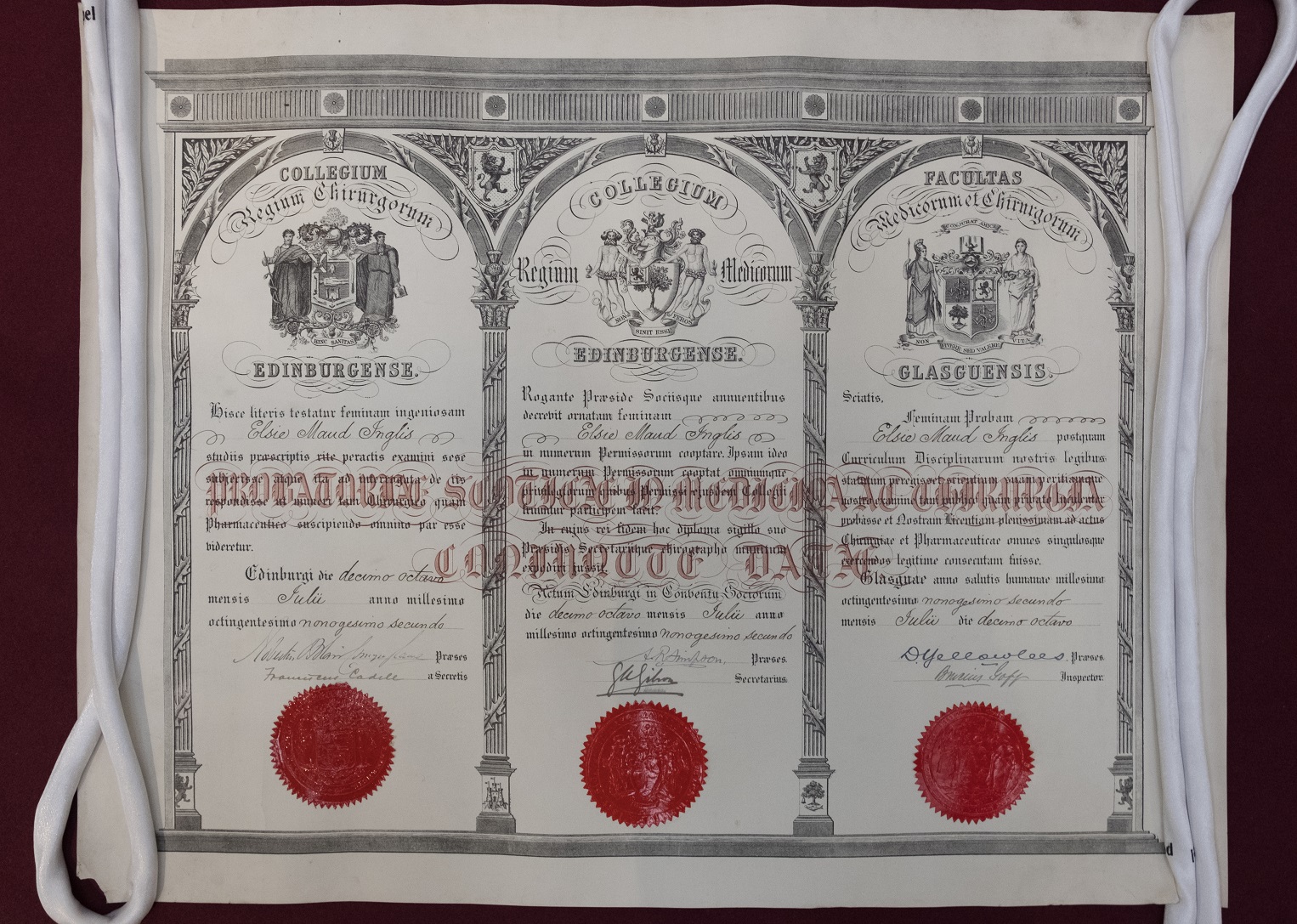The Scottish Triple 1884-1993

The Scottish Triple was a GMC-approved non-University route to a medical degree for over 100 years. It was notably used imaginatively to provide routes to qualification in the UK for disadvantaged or minority groups, including women, refugees, and immigrants.
The Medical Act (Amendment Act) of 1886 required that a qualification must include both medicine and surgery in order to be able to join the Medical Register. Seeing this coming, to preserve their authority as licensing bodies, the three Scottish Colleges (the College of Physicians and the College of Surgeons in Edinburgh, and College of Physicians and Surgeons in Glasgow) agreed on a Conjoint medical and surgical qualification, which later became informally known as the “Scottish Triple”. The Triple was approved by the General Medical Council (GMC) in March 1884, and effectively consolidated the ad-hoc teaching provided by extramural and private anatomy schools. The curriculum included both theoretical and practical study which had to be signed off by an instructor (Dingwall, 2010).
What makes the Triple strand out was undoubtedly its students. Possibly inadvertently, from its creation the Triple made no exclusions, so allowed women to sit the examinations. It was explicitly made open to women in 1886 (Hay, 2021). This allowed many of the first female doctors to become registerable physicians before Scottish universities finally allowed women to enter in 1892. The Triple was also easier to access than university education for international students and so attracted a number of students looking for colonially approved medical qualifications (Dingwall, 2010). For example before 1940 there were no opportunities for black individuals to study medicine at University in South Africa, so students were forced to train overseas in order to qualify. This lead to a handful of black South African doctors qualifying in Scotland between 1883 and 1940, many of whom took the Triple (Mayosi, 2015). The qualification was also sat by a number of Indian women in the late 19th century as part of a feminist (and imperialist) drive to train female doctors in Britain to serve the Indian women of the Empire. Specific funding was made available enabling these women to come to the UK to study (Hunter, 2019).
The Triple also offered a straightforward entry to refugee physicians who required GMC registration in order to carry on practising in the UK (Dingwall, 2010). In the 1930s and 1940s hundreds of physicians came from central Europe following seizure of power by the Nazis in Germany in 1933 . There were more spaces available at the extramural schools compared to University courses, and the triple was more flexible as it allowed practitioners to gain the qualification after just one year of clinical studies (without the need to pass physiology examinations). The examination fees were also considerably more affordable at £30 for all subjects, including examination fees, whereas the fees at most British Universities ranged from £35-50 per year. After the Second World War many of these individuals went on to fill personnel shortages in the newly created National Health System (Collins, 2009). By the late 1960s, the Triple was firmly established as a way for foreign individuals to gain a qualification recognised in the UK. When the final examination diet for the Triple was sat in 1993, all applicants had previous medical degrees from foreign universities (Dingwall, 2010).
The end of the Triple began with the Goodenough report (1945), which recommended that universities should be the main entry portal for medical students’ education (Dingwall, 2010). Universities gradually became the dominant path to a medical degree in the UK, and the long era of extra mural teaching in Scotland ended. Many of the colleges closed or were absorbed into medical universities, but some, such as The Royal College of Surgeons, and the Royal College of Physicians, of Edinburgh, refocused their attention on post graduate qualifications (Haufman, 2003). To combat the decline, the Non-University Licensing Boards combined in 1994 to form the United Examining Board (UEB), with the goal of providing medically qualified asylum seekers. This move gained much support from the medical community, but as medical schools slowly withdrew their facilities from UEB candidates, it was decided by the board that candidates should be examined by the universities. The UEB board dissolved in 2007 closing this entry portal into medicine (Gibberd 1998, Dingwall, 2010).
By Tanith Bain, July 2021.
References and further reading
Tanith Bain’s post on Medical Education in Edinburgh 1700-1850 sets the background to this one. See also posts in the Uncover-ED series.
Featured image: Elsie Inglis’ Triple Qualification certificate, on loan to the Royal College of Surgeons of Edinburgh on behalf of Elsie’s relations, via WW100 Scotland
- Collins K, 2009. European refugee physicians in Scotland, 1933–1945. Social History of Medicine, 22:513-530.
- Dingwall HM, 2010. The Triple Qualification examination of the Scottish medical and surgical colleges, 1884-1993. Journal of the Royal College of Physicians of Edinburgh, 40:269-276.
- Gibberd FB, 1998. GMC must not recommend abolition of United Examining Board’s examination. Br Med J, 316:1386.
- Hay 2021: The triple qualification and womens access to medical education. Glasgow College of Physicians and Surgeons Heritage blog.
- Hunter S, 2019. “Colouring the map red”: Lady Hariot Dufferin and the Imperial Networks of the Dufferin Fund. In Ireland’s Imperial Connections, 1775–1947 (pp. 273-290). Palgrave Macmillan, .
- Kaufman MH, 2003. Medical Teaching in Edinburgh during the 18th and 19th centuries. Royal College of Surgeons of Edinburgh.
- MacLaren I, 2005. A Brief History of the Royal College of Surgeons of Edinburgh, Res Medica, 268:55-56.
- Simmons A, 2019. Trade, knowledge and networks: the activities of the Society of Apothecaries and its members in London, c. 1670–c. 1800. The British Journal for the History of Science, 52:273-296.




Fascinating article on the routes marginalised people used to get accesss to a medical career